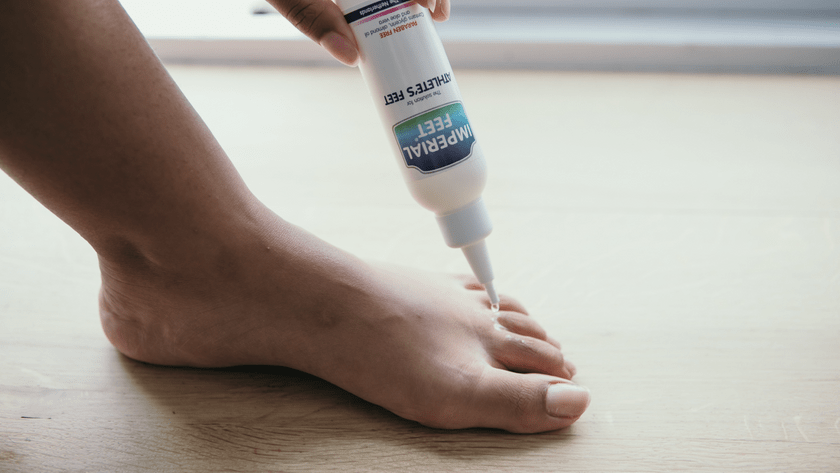
What is athlete’s foot, and how to treat it?
Athlete’s foot or tinea pedis often occurs in people whose feet sweat heavily when wearing closed shoes, is easily spread through contaminated surfaces in public places such as showers, and usually does not require medical attention and heals within days or weeks.
What’s the meaning of athlete’s foot?
As its name indicates, an athlete’s foot commonly affects people who play sports but you don’t have to be an athlete to get it. Nail fungus, or onychomycosis, is a common complication as well. Both conditions are caused by the same type of fungus called dermatophytes, which thrive in warm, moist places and live in dead skin tissue. These fungi also cause ringworm and jock itch. Athlete’s foot is a skin infection, while onychomycosis is an infection of the nail itself.
How do people get athlete’s foot?
It can be spread in places such as locker rooms, gyms, beauty salons, swimming pools, and community showers. The fungus can also be spread by sharing personal items such as towels, socks, and clothing.
Chances of contracting an athlete’s foot are even higher when walking barefoot on carpets, such as in hotel rooms. Also, sweaty feet and moisture from closed shoes increase the risk of infection.
What does an athlete’s foot look like at first?
The symptoms of athlete’s foot fungus include itching, burning, and cracked, scaly skin between your toes. Sometimes, there may be oozing or crusting, itchy blisters, and swelling. The sole and the side of the foot may develop scaling patterns.
When athlete’s foot is severe and causes open sores in the skin, it makes it more vulnerable to bacteria. If left untreated, there is a risk that the infection will spread from toe to toe.
What are the most common types?
- Interdigital infection usually occurs between the fourth and fifth toes. The skin peels, flakes, and cracks. Some people may also have an infection with bacteria. This can cause the skin to crack even more.
- The moccasin-type infection may start with a slight pain in the foot. Then, the skin on the sole may become thick and cracked. In severe cases, toenails become infected and may become thick, crumbly, and even fall out. Fungal infection in the toenails requires separate treatment.
- A vesicular-type infection usually begins with a sudden outbreak of fluid-filled blisters under the skin. The blisters are usually located on the bottom of the foot. However, they can occur anywhere on the foot. You can also get a bacterial infection with this type of athlete’s foot.
How do you get rid of an athlete’s foot?
People who suffer from athlete’s foot can be treated with specific products such as Athletes Foot Solution, a product that has an anti-fungal effect on the growth of the fungi and consequently destroys them.
Its active ingredients keep your feet relieved while preventing reinfection. This formula keeps your feet free of itchiness and peeling skin while keeping them nourished due to its richness in Almond Oil and Tea Tree Oil.
Now imagine applying this efficient solution and also you could revitalize and moisturize your skin, even more, well let me tell you that it is possible with the exact combination of ginseng, aloe vera, and glycerin contained in the healing power of Imperial Feet’s Foot Balm Green.
You might be wondering: will athlete’s foot go away by itself? And the answer is without treatment, normally doesn’t go away on its own. So what’s the best cure for athlete’s foot? Continue treatment for at least one week after symptoms have disappeared.
How to prevent the spread:
To ensure the treatment is as effective as possible, we recommend you to follow the next tips:
- Wash your feet daily with soap and water and dry them carefully, especially between the toes.
- Avoid walking barefoot, use shower shoes.
- Reduce transpiration by using talcum powder.
- Wear wide and comfortable shoes and wear clean cotton socks.
- Change shoes regularly to reduce moisture.
- After washing your feet, dry them thoroughly, paying special attention to the areas between the toes.
- Do not share towels and wash them regularly.







